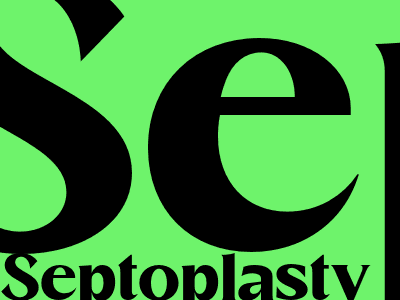Septoplasty Surgery: A Comprehensive Guide from Diagnosis to Recovery
Introduction
Septoplasty is a surgical procedure to correct a deviated septum, a condition where the nasal septum (the wall separating the nasal cavities) is off-center. This can cause breathing difficulties, nasal congestion, and other issues.
Causes and Symptoms
Causes
A deviated septum can be caused by various factors, including:
- Trauma or injury to the nose
- Genetic factors
- Birth defects
Symptoms
Symptoms of a deviated septum can include:
- Difficulty breathing through one or both nostrils
- Nasal congestion and stuffiness
- Nasal bleeding
- Facial pain or pressure
- Headaches
- Snoring
Diagnostic Process
To diagnose a deviated septum, a doctor will typically perform a physical examination of the nose and sinuses, as well as nasal endoscopy to visualize the nasal septum. Imaging tests, such as X-rays or CT scans, may also be used to confirm the diagnosis.
Surgical Procedure
Overview
Septoplasty is an outpatient procedure typically performed under general anesthesia. The surgery involves making incisions in the nasal septum and repositioning the cartilage and bone to correct the deviation.
Steps
- The surgeon makes incisions along the nasal septum.
- The surgeon separates the septum from the surrounding tissues.
- The surgeon repositions the deviated cartilage and bone.
- The surgeon closes the incisions with sutures or splints.
Recovery
After surgery, patients may experience discomfort, swelling, and bleeding. Nasal packing or splints may be placed in the nose to support the septum during healing. Recovery typically takes 1-2 weeks, with most patients able to resume normal activities within a few days.
Risks and Complications
As with any surgical procedure, septoplasty carries certain risks and complications, including:
- Bleeding
- Infection
- Scarring
- Perforation of the nasal septum
- Changes in the shape of the nose
Benefits
Septoplasty can provide significant benefits for patients with a deviated septum, including:
- Improved breathing
- Reduced nasal congestion and stuffiness
- Relief from facial pain and pressure
- Improved sleep quality
- Reduced risk of sinus infections and other nasal problems
Alternatives to Septoplasty
In some cases, alternative treatments may be considered for a deviated septum, such as:
- Nasal sprays or medications to reduce swelling
- Nasal dilators to widen the nasal passages
- Radiofrequency ablation to shrink the nasal tissue

Comments